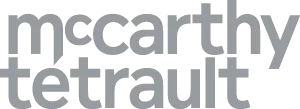In Part I of this three-part series, we provided an overview of the concerns associated with forced labour in supply chains. In doing so, we highlighted the forced labour "global crisis" affecting millions of people on any given day, as well as billions' of dollars of goods. It is increasingly being recognized that forced labour is an issue requiring a global, coordinated response. This Part II considers the role Canada is playing in this global response, including through the imposition of a ban on the importation and distribution of products made in whole or in part from forced labour (the "Import Ban"), as well as what we can expect to see going forward in the form of Canadian supply chain legislation. Part III will conclude this series by setting out a number of recommended actions that companies can (and should) be taking right now to mitigate their risk exposure to forced labour in their supply chains.
Canada is actively taking steps to address forced labour concerns
Canada has taken a variety of actions in recent years to address concerns related to forced labour and other human rights violations. At a high-level, these responses have included the imposition of economic sanctions against parties involved in or determined to be facilitating gross violations of human rights or acts of significant corruption, new export and technology transfer controls, and the issuance of advisory notices and an integrity declaration for companies sourcing from or supplying the Xinjiang region of China - details on these recent actions can be found in our previous client alerts Human Rights Due Diligence in the Supply Chain: Canada's Advisory on Doing Business With China and Canada Announces Human Rights Sanctions Against China.
Enforcement of the Import Ban
Canada has also implemented the Import Ban, which expanded upon the existing ban on goods produced by way of prison labour.1 On July 1, 2020, the Canadian Customs Tariff was amended as part of the implementation of the Canada-United States-Mexico Agreement, to prohibit the importation of goods that are produced wholly or in part by forced labour, from any country - not just from the United States or Mexico. The Import Ban operates through subsection 136(1) of the Customs Tariff, which provides that the "importation of goods of tariff item No. 9897.00.00...is prohibited" and tariff item no. 9897.00.00, which references goods that are "mined, manufactured or produced wholly or in part by forced labour". Sections 101-102 of the Customs Act further grant customs officers the ability to detain prohibited goods and provide for their disposal.
According to one government report, the regime operates as follows:
Shipments containing goods suspected of being produced by forced labour are detained at the border for inspection by a border services officer. If in the judgement of the officer, the goods were produced by forced labour, the officer will apply the appropriate tariff classification and prohibit the goods from entering Canada. Tariff classification determinations are made on a case-by-case basis for each specific import, based on available supporting evidence and analysis.2
As of April 29, 2021, the Canada Border Services Agency ("CBSA") confirmed that it had not yet started enforcing the Import Ban,3 which delay was reportedly due to the time required to establish the legal framework for the program, including developing indicators, because "[u]nlike most other inadmissible products, there is no visual clue for a Border Services Officer to understand the labour standards by which a particular product was produced".4 However, in May 2021, Reuters reported on the Canadian government's ongoing investigation into allegations of forced labour by Malaysia's palm oil and glove manufacturing industries, indicating that Employment and Social Development Canada had confirmed in writing that it is "actively researching a number of forced labour allegations in different countries and sectors".5
Going forward, we expect to see increasing enforcement activity in respect of the Import Ban, as Canada's program is implemented, and especially if Canada is influenced by its southern neighbour. The United States has a similar ban, which prohibits the importation of merchandise produced, wholly or in part, by prison labour, forced labour, and/or indentured labour, including forced or indentured child labour. This ban allows U.S. Customs and Border Protection ("CBP") to detain shipments of goods suspected of being imported in violation of this ban. Importers of detained shipments then have the opportunity to export their shipments or demonstrate that the goods were not produced with forced labour.6
The United States has been active in enforcing this ban - for example, a Globe and Mail article reported that in the last two months of 2020 alone, the CBP had detained 90 shipments for suspicions of forced labour.7 The United States has also issued a number of "Withhold Release Orders" on imports - including on cotton, tomato products, and, most recently, solar panels - where the CBP believes such imports involve the use of forced labour.8 Notably, the CBSA has indicated that it is working with the CBP to discuss information sharing and best identification practices.9
We note that this issue is also attracting media attention, which may spur government action - CBC News (along with The Guardian and Investigative Reporting Project Italy, a non-profit media organization) is conducting a Marketplace investigation into grocery store products (tomatoes in particular) that could be tied to forced labour in Xinjiang, China.10
With the Import Ban in place and the looming risk of CBSA enforcement activity, Canadian companies should be aware of their obligations. The Government of Canada has said that it "expects companies to take every step possible to ensure that their supply chains conform to Canadian law with respect to the prohibition on the import of forced labour" (emphasis added).11 CBSA guidance also emphasizes that "[i]mporters are responsible for ensuring that any goods that they are importing into Canada are compliant with Canadian law" and that "[i]t is the responsibility of the importer to conduct due diligence on its supply chains to ensure that goods it imports into Canada are not mined, manufactured or produced wholly or in part by forced labour".12
The Import Ban affects distributors, retailers, and other purchasers in Canada - even if they are not importers
It is important to be aware that the Import Ban also affects non-importing companies that acquire imported goods for distribution or sale in Canada, including distributors and retailers.
Section 15 of the Customs Act requires anyone who finds or has goods in their possession and who "believes on reasonable grounds" that the importation of those goods may be prohibited, to "forthwith" report those goods to an officer.13 In addition, section 155 of the Customs Act provides that "[n]o person shall...have in his [or her] possession, purchase, sell, exchange or otherwise acquire or dispose of any imported goods in respect of which the provisions of this or any other Act of Parliament that prohibits, controls or regulates the importation of goods have been contravened". Penalties for failing to comply with the Customs Act can be significant: pursuant to subsection 160(1), punishment for contravening sections 15 or 155 includes fines of up to CAD$500,000, up to five years in jail, or both.
These issues also pose reputational risks for importers and non-importers alike, who may be subject to scrutiny in the media and other public forums.
Next steps? The re-introduction of supply chain disclosure and transparency legislation in Parliament
In recent years, several countries around the globe have adopted supply chain legislation, with California, a pioneer in this regard, adopting such legislation as early as 2010.14
pic
Canada has followed (or rather, attempted to follow) in the footsteps of its global counterparts by proposing its own supply chain legislation. Canada's proposals have included Bill S-216,An Act to enact the Modern Slavery Act and to amend the Customs Tariff ("Bill S-216" or the "Bill"),15 which was introduced in the Senate on October 29, 2020, passed its second reading on March 30, 2021, and was undergoing review by the Standing Senate Committee on Banking, Trade and Commerce before the election call in August, at which time the Bill died on the Order Paper.16
In her remarks to the Senate, Senator Julie Miville-Dechêne described Bill S-216 as "supply chain transparency legislation" - "a tool for transparency to fight against child labour and forced labour in the supply chains of Canadian businesses".17 In its summary section, the Bill was described as legislation that "imposes an obligation on certain entities to report on the measures taken to prevent and reduce the risk that forced labour is used at any step in the production of goods in Canada or elsewhere by the entity or in the production of goods imported into Canada".
For context, global supply chain legislation can broadly be divided into two categories: (1) legislation that imposes disclosure and transparency requirements, and (2) legislation that imposes due diligence and other conduct requirements:
- Supply chain disclosure and transparency legislation generally requires companies to disclose identified risks, as well as actions taken to address such risks, but without directing a change in conduct. The premise behind this type of legislation is that it allows the market, including investors and consumers, to better assess company performance on this important metric. It is also based on the "name-and-shame concept", where "corporate offenders can be shamed by human rights advocacy groups".18
For example, California's disclosure and transparency legislation requires retailers and manufacturers with sales over prescribed thresholds to post disclosures on their websites related to verification, audits, certification, internal accountability, and training. Similarly, the United Kingdom's disclosure and transparency legislation, adopted in 2015, requires commercial organizations with sales over prescribed thresholds to prepare a slavery and human trafficking statement for each financial year, which must be signed off by upper management and published on the company website. An estimated 12,000 companies prepare and publish these statements, including Canadian companies such as RBC and CIBC.19
- Supply chain due diligence legislation generally requires adherence to new forms of conduct and market practice, such as taking action to prevent or mitigate risks and also to report on them.20
For example, France's Corporate Duty of Vigilance Law, adopted in March 2017, requires large companies to prepare, implement, and publish details regarding their due diligence plans designed to prevent serious human rights and environmental violations associated with their operations and supply chains. As another example, the Netherlands' Child Labour Due Diligence Law, adopted in May 2019, requires companies to identify whether child labour is present in their supply chains and to set out an action plan for combatting that risk.21 The European Union has also recently adopted supply chain due diligence legislation specifically addressing conflict minerals and timber.22
Clearly, Bill S-216 fell into the first category of supply chain legislation described above: disclosure and transparency legislation.
With the continuity of the Liberal government, we can expect the next such bill introduced into Parliament will likely be similar (if not identical) to Bill S-216, although the possibility exists that Canada could take a more ambitious approach and adopt supply chain due diligence legislation. Companies should prepare for either possibility, especially with countries around the world adopting increasingly ambitious approaches to tackle concerns related to forced labour.
Anticipating what Canada's future supply chain legislation may look like: a closer look at Bill S-216
Reporting requirements for entities producing, selling or importing goods into Canada
Bill S-216 would have imposed annual reporting obligations on "entities" that produce, sell, or import goods in or into Canada, or which control (directly or indirectly) an entity engaged in producing, selling, or importing goods in or into Canada.23
"Entity" was defined to mean a corporation or a trust, partnership or other unincorporated organization that:
- is listed on a stock exchange in Canada;
- has a place of business in Canada, does business in Canada, or has assets in Canada, and meets two of three prescribed thresholds (e., greater than $20 million assets, greater than $40 million in revenue or greater than 250 employees); or
- is otherwise prescribed by regulations.24
This definition was intended to create a "pragmatic approach", according to Senator Julie Miville-Dechêne, as "Bill S-216 targets big corporations with the means to produce these reports, not SMEs and little local shops for which it would be too great a burden".25
Nevertheless, the breadth of this definition would inevitably have captured a broad array of businesses in a variety of different industries. Notably, this scope aligns closely with the structure of the payment reporting regime established for mining and oil and gas companies under Canada's Extractive Sector Transparency Measures Act ("ESTMA") which contains a similar definition of "entity".26 Further details on the ESTMA disclosure regime can be found in our client alert "Publish What You Pay" Alert: ESTMA Guidance and Reporting Requirements for Oil and Gas Firms Now Finalized.
Broadly speaking, Bill S-216 would have required entities falling within scope to produce an annual report setting "out the steps the entity has taken during that year to prevent and reduce the risk that forced labour or child labour is used at any step of the production of goods in Canada or elsewhere by the entity or of goods imported into Canada by the entity".27
"Forced labour" and "child labour" were defined as follows:
- Forced Labour"means labour or service provided or offered to be provided by a person under circumstances that (a) could reasonably be expected to cause the person to believe their safety or the safety of a person known to them would be threatened if they failed to provide or offer to provide the labour or service; or (b) constitute forced or compulsory labour as defined in article 2 of the Forced Labour Convention, 1930, adopted in Geneva on June 28, 1930".
- Child Labour"means labour or service provided or offered to be provided, in Canada, by persons under the age of 18 years under circumstances that (a) are contrary to the laws applicable in Canada or, if provided or offered to be provided outside Canada, under circumstances that, if provided or offered to be provided in Canada, would be contrary to the laws applicable in Canada; or (b) constitute the worst forms of child labour as defined in article 3 of the Worst Forms of Child Labour Convention, 1999, adopted at Geneva on June 17, 1999".28
The annual report would have also required the inclusion of information regarding the reporting entity's structure, the goods that it produces in Canada or elsewhere or that it imports into Canada, policies related to forced labour and child labour, activities that carry a risk of forced labour or child labour and steps taken to assess and manage that risk, measures taken to remediate any forced labour or child labour, and applicable training provided to employees. 29
The Bill would have required companies to submit this report to the Minister of Public Safety and Emergency Preparedness ("Minister") no later than 180 days after the end of each financial year.30
Release in the public domain for scrutiny by investors and consumers
Bill S-216 did not mandate companies to reduce their use of forced labour - rather, it required transparency, through mandatory reporting. This model relies heavily on the assumption that companies will be motivated to introduce or improve measures aimed at reducing reliance on forced labour because of the prospect of public scrutiny.
Unsurprisingly, therefore, in addition to supplying a report to the Minister, the Bill required companies to make their report available to the public, "including by publishing it in a prominent place on its website".31 The Minister would also have been required to maintain an electronic registry with copies of every report provided, to be made available to the public online.32 Again, this tracks closely with the approach adopted under the ESTMA regime for the publication of information on companies' payments to governments and state-owned enterprises.33
Obligations of this nature would not be entirely new for Canadian organizations that already publish such reports for other jurisdictions, such as companies that operate in the United Kingdom.
We may see a broader import ban which will include goods mined, manufactured or produced using child labour
As noted above, on July 1, 2020, the Customs Tariff was amended to give effect to the Import Ban. Bill S-216 would have expanded the Import Ban to exclude "goods that are mined, manufactured or produced wholly or in part by forced labour or child labour as those terms are defined in section 2 of the Modern Slavery Act".34
We can expect to see proposed legislation with "teeth", exposing companies to the prospect of penalties and investigations
Unlike similar UK and Australian laws, which do not currently provide for monetary penalties for non-compliance, Bill S-216 was said to have "teeth", as it provided for oversight, made individuals at the top accountable, and included penalties.35
In particular, any person or entity who failed to comply with the Bill's annual reporting requirements, who knowingly made any false or misleading statement or knowingly provided any false or misleading information to the Minister, or who failed to make an annual report publicly accessible, would have been held guilty of an offence punishable on summary conviction and liable to a fine of up to CAD$250,000.36 Officers and directors, who would have been required to attest that their annual report is true, accurate and complete, could also have been held personally liable for non-compliance.37
The Bill also granted considerable latitude to the Minister to carry out investigations. In particular, designated persons would have been permitted to "enter any place where they have reasonable grounds to believe there is anything to which [the Modern Slavery Act] applies or any document relating to the administration of [the Modern Slavery Act]", and in so doing, examine anything in the place, take photographs, make recordings or sketches, remove anything from the place to be examined, among other things.38
* * *
As discussed in Parts I and II of this series, forced labour is truly a global crisis and one that Canada is rightly taking steps to address. In the context of anticipated increasing CBSA enforcement activity in respect of the Import Ban, and (likely) incoming supply chain legislation, Part III will provide recommendations for what you can and should be doing now to prepare.
Footnotes
1 See CBSA, Memorandum D9-1-6, "Goods manufactured or produced by prison or forced labour" (May 28, 2021), online: https://www.cbsa-asfc.gc.ca/publications/dm-md/d9/d9-1-6-eng.html [D-Memo].
2 Government of Canada, "Issue notes-Special Committee on Canada-China Relations: National Security Dimension of the Canada-China Relationship (March 11, 2021)", online: https://www.cbsa-asfc.gc.ca/pd-dp/bbp-rpp/cacn/2021-03-11/issues-enjeux-eng.html [Government of Canada - Issues Notes on Canada-China Relations].
3 This is according to a June 2021 report published by Above Ground, a non-profit organization focused on the protection of human rights. According to this same report, the government has provided little information regarding how it will enforce this prohibition. For example, the CBSA has declined to specify whether importers could face any legal penalties for violating the ban (as they can in the U.S.), and what criteria the CBSA would use in the event of a detention order to decide whether to release detained goods or to revoke the detention order. The report also generally suggests Canada's enforcement approach may fall short of the U.S. model, as it reportedly does not allow for detention orders blocking the importation of goods of a certain type from an entire region: Above Ground, Creating Consequences (June 2021), online: https://aboveground.ngo/wp-content/uploads/2021/06/Above-Ground-forced-labour-report-June-2021.pdf at 12-13.
4 Government of Canada - Issues Notes on Canada-China Relations, supra note 2.
5 Rozanna Latiff & Ed Davies, "Canada probes forced labour claims in Malaysian palm oil, glove-making industries", Reuters (May 27, 2021), online: https://www.reuters.com/world/asia-pacific/canada-probes-forced-labour-claims-malaysian-palm-oil-glove-making-industries-2021-05-28/.
6 See U.S. Federal statute 19 U.S.C. 1307; U.S. Customs and Border Protection, "CBP Issues Region-Wide Withhold Release Order on Products Made by Slave Labor in Xinjiang" (January 13, 2021), online: https://www.cbp.gov/newsroom/national-media-release/cbp-issues-region-wide-withhold-release-order-products-made-slave.
7 Steven Chase, "No products made with forced labour seized by Canadian border guards since import ban in mid-2020" (March 31, 2021), Globe and Mail, online: https://www.theglobeandmail.com/politics/article-no-products-made-with-forced-labour-seized-by-canadian-border-guards/.
8 See U.S. Customs and Border Protection, "Withhold Release Orders and Findings List", online: https://www.cbp.gov/trade/programs-administration/forced-labor/withhold-release-orders-and-findings; U.S. Customs and Border Protection, "CBP Issues Region-Wide Withhold Release Order on Products Made by Slave Labor in Xinjiang" (January 13, 2021), online: https://www.cbp.gov/newsroom/national-media-release/cbp-issues-region-wide-withhold-release-order-products-made-slave.
9 Government of Canada - Issues Notes on Canada-China Relations, supra note 2.
10 Eric Szeto, Caitlin Taylor, Asha Tomlinson, Matteo Civillini & Winston Szeto, "Canada's grocery chains stocked with tomato products connected to Chinese forced labour" (October 29, 2021), CBC News, online: https://www.cbc.ca/news/canada/marketplace-tomato-products-investigation-1.6227359.
11 Global Affairs Canada, ""Integrity Declaration on Doing Business with Xinjiang Entities", online: https://www.international.gc.ca/global-affairs-affaires-mondiales/news-nouvelles/2021/2021-01-12-xinjiang-declaration.aspx?lang=eng.
12 D-Memo, supra note 1 at para. 10.
13 According to the CBSA, reports of suspected cases of prohibited goods being imported into Canada can be made with the CBSA's Border Watch Tip Line.
14 World Vision Canada, "Risky Canadian Grocery Report" (2021), online: https://s3.amazonaws.com/tld-documents.llnassets.com/0024000/24584/risky-canadian-grocery-report-final-03feb2021.pdf at 12.
15 Bill S-216, An Act to enact the Modern Slavery Act and to amend the Customs Tariff, 2nd Sess., 43rd Parliament, online: https://parl.ca/DocumentViewer/en/43-2/bill/S-216/first-reading [Bill S-216].
16 As we noted in Part I of this series, Bill S-216 was Canada's third bill addressing this issue. Bill S-216 followed in the footsteps of Bill S-211, introduced by Senator Miville-Dechêne in a previous legislative session, as well as Bill C-423, a Private Members Bill introduced into the House of Commons by Liberal Minister of Parliament John McKay in December 2018.
17 Remarks by Hon. Julie Miville-Dechêne, Senate of Canada, Modern Slavery Bill - Bill to Amend - Second Reading (November 5, 2020), online: https://sencanada.ca/en/content/sen/chamber/432/debates/010db_2020-11-05-e#67 at 1750 [November 5th Debates].
18 Ibid at 1800.
19 See International Labour Organization, Organisation for Economic Co-operation and Development, International Organization for Migration, and United Nations Children's Fund, "Ending child labour, forced labour and human trafficking in global supply chains" (2019), online: http://mneguidelines.oecd.org/Ending-child-labour-forced-labour-and-human-trafficking-in-global-supply-chains.pdf at 45-46.
20 Ibid at 45.
21 Ibid at 47.
22 European Parliament, "Towards a mandatory EU system of due diligence for supply chains" (October 2020), online: https://www.europarl.europa.eu/RegData/etudes/BRIE/2020/659299/EPRS_BRI(2020)659299_EN.pdf at 4.
23 Bill S-216, supra note 15, sections 5-6.
24 Ibid, section 2.
25 November 5th Debates, supra note 17 at 1800.
26 See Extractive Sector Transparency Measures Act, sections 2 and 8.
27 Bill S-216, supra note 15, section 7(1).
28 Ibid, section 2.
29 Ibid, subsection 7(2).
30 Ibid, subsection 7(1).
31 Ibid, section 8.
32 Ibid, section 9.
33 See Natural Resources Canada, "Extractive Sector Transparency Measures Act (ESTMA)", online: https://www.nrcan.gc.ca/our-natural-resources/minerals-mining/extractive-sector-transparency-measures-act/18180 for more details on how to report under ESTMA and to view reports published in the last five years by companies that comply with ESTMA.
34 Bill S-216, supra note 15, section 21.
35 November 5th Debates, supra note 17 at 1800.
36 Bill S-216, supra note 15, section 16.
37 Ibid, sections 7(3), 17.
38 Ibid, section 11.
To view the original article click here.
The content of this article is intended to provide a general guide to the subject matter. Specialist advice should be sought about your specific circumstances.




